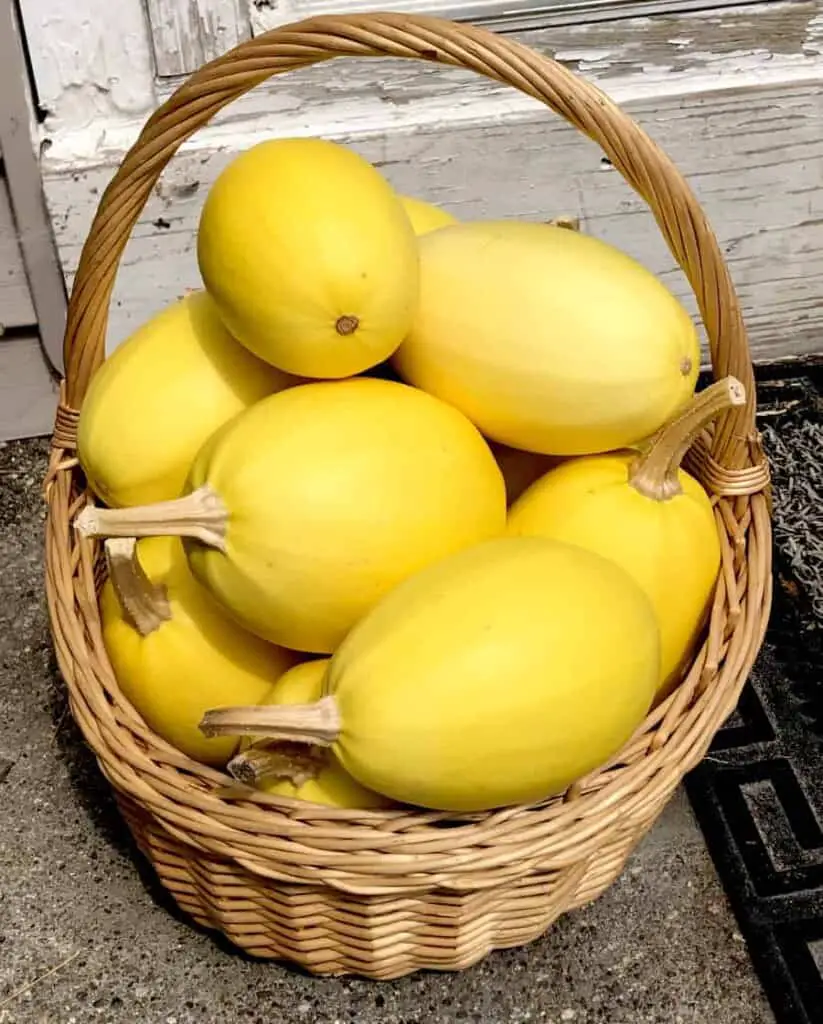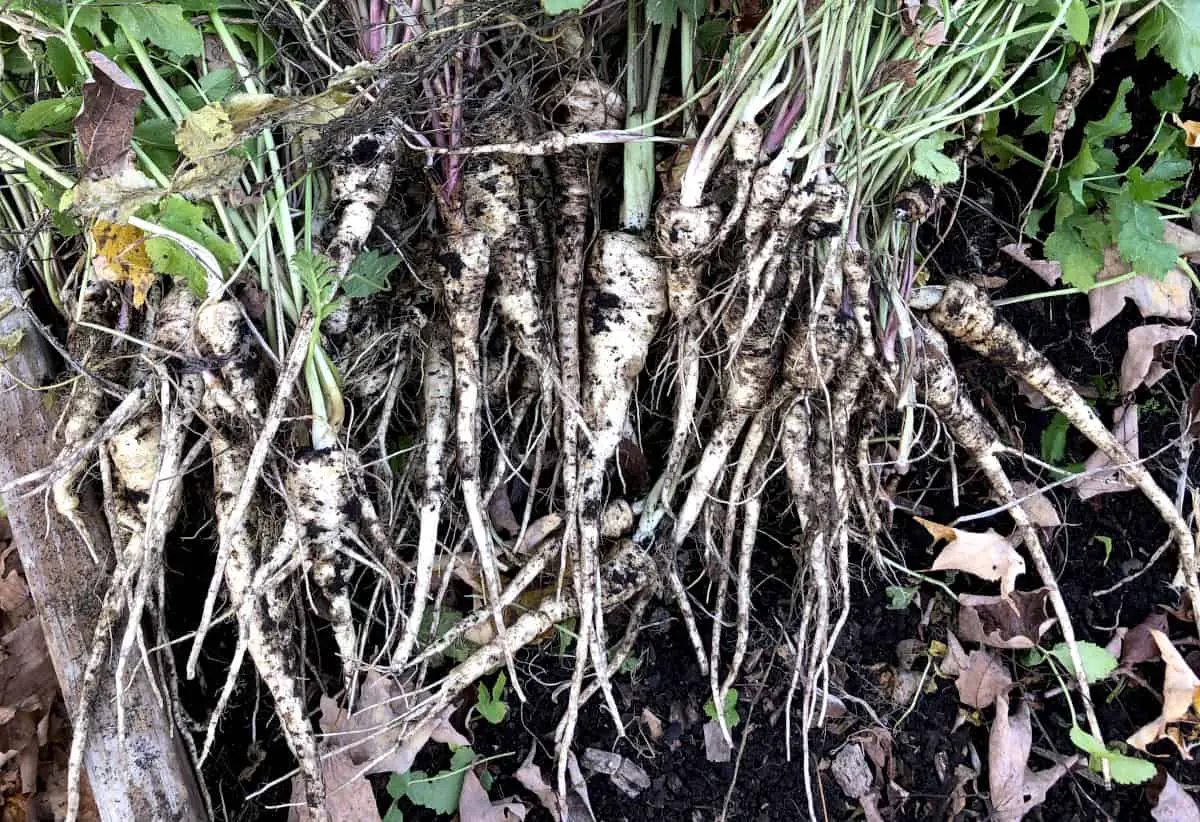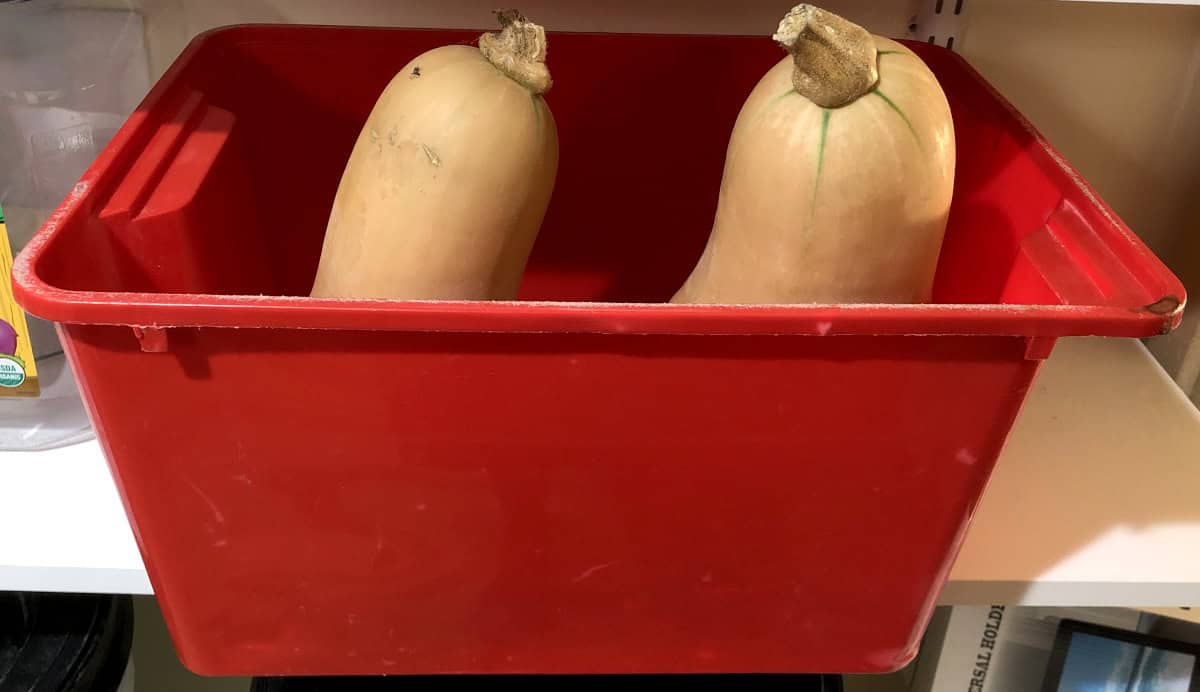Many gardeners like me are focusing to grow produce that would last long in storage. Some vegetables will last you only a few months, others will store all the way through winter, and some will store well till the next harvest season.
Vegetables you can plant for food storage are beans, herbs, garlic, onions, winter squash, butternut squash, spaghetti squash, and root vegetables like potatoes, sweet potatoes, carrots, parsnip, celeriac, beets, and rutabaga. Consider your storage space and choose vegetables that like the conditions you have to store them properly. If you have space that is dark, cool, and dry then grow vegetables that like dark, cool, and dry conditions. If however, you have space that is dark, and cool but humid, then grow veggies that like to be stored in those conditions.

What vegetables last longest in dark, cool, and dry storage
Vegetables that like to be stored in dark, cool, and dry storage are dry beans and dry herbs packed in plastic containers or plastic bags. They can last you for years, or until you eat them. Garlic and onion along with winter squash, butternut squash, and spaghetti squash, if cured properly and stored in a dark, cool, and dry place, can last you until the next harvest season.
Notice that I have listed the vegetables in order from those which last longest in storage and then those which last shortest in storage.
What vegetables last longest in dark, cool, and humid storage
Root vegetables like potatoes, sweet potatoes, carrots, parsnip, celeriac, beets, and rutabaga, can last you through the winter if stored properly in a cool, but not freezing, dark and moist storage.
When talking about fruit to store, apples are the best for storage. They can last through winter if stored properly. They also require cool, dark, and a bit, but not too moist storage. They must be kept above freezing temperature.

Where to store harvest for the longest shelf life
The best place to store vegetables and fruit is a cellar or a refrigerator. But I am sure that we are all limited in how much a refrigerator we have available to store all our harvest. If no cellar is available, then we need to just become resourceful and creative. Other spaces that could work well for storage can be an unheated garage, outbuilding, unheated or cool room in the house, or a closet with exterior walls.
What is a cellar
A cellar is an unheated, underground room with ventilation usually located under houses or dug out in the ground or in a hill. If you have a cellar, you know it’s the best place to store your produce to keep it fresh for months to come. But what about the rest of us? Where can we store the precious produce, we worked so hard for?
Where should vegetables be stored at home?
Choose a space that would provide conditions closest to the ideal ones. It should be dark and cool. If the place is humid use that to store veggies that like a bit of humidity. If the space is dry, store veggies that like to be stored dry.
If you are like me with no cellar, and limited space in a fridge then let us brainstorm other places where we could potentially store our vegetable garden harvest. If you live in a house, look around your home and property. Perhaps you have a garage or an outbuilding you could use to store fresh produce. For those who live in an apartment look for the coolest room, it could be an unheated guest room, a room facing north, a room with exterior walls, or a closet with exterior walls.
Where should I store vegetables in a small house or no space at home?
Believe it or not, I have a small house and I had no option besides turning our only guest bedroom in the basement into a storage room. I sacrifice a bedroom but gained a storage room! Sometimes we have to choose our priorities. A storage room in our case won all the way. We had only one guest using our guest room in about 7 years, so not that often. But we need food every day. So the storage room won over a nice guest bedroom.
If you completely run out of space inside your home or apartment, I understand that. Sometimes storing produce is not possible inside, let’s look outside then. You could build a root clamp, also called a potato clamp.
What is a root clamp?
A root clamp is a space dug in the ground isolated with natural dirt walls from the bottom and sides and isolated with dry leaves, bagged leaves, hay, or straw on top. A root clamp needs to be dug deep enough for the ground not to freeze down there. For example, if the soil in your zone freezes 2 feet down then you need to dig about 3 feet down and store your vegetable deep enough not to freeze.
How to build a root clamp
Dig a hole deep and wide enough for you to be able to store all the veggies you like to store there, and as previously mentioned, it should be dug deep enough to keep your harvest from freezing.
Make sure when placing your root vegetable there they are not touching each other. You can separate them using the soil you dug out, or sand. I saw gardeners using moist leaves for separation as well. They can work well as they would not only provide isolation but also moisture to keep your root veggies crisp.
You can also place your veggies in crates or perforated buckets before burying them in a clamp. Perforation will lead all the accumulated water from moisture or rain out so your veggies do not drown and rot in water.
Then cover the root clamp with the dirt you dug out and isolate it all with something that would provide isolation and keep your veggies from freezing. You can repurpose dry leaves, hay, straw, a sheet of cardboard, and newspapers with some weight on top to keep it all in place.
If you have a hoop house, cold frame, or a greenhouse, you can dig a root clamp under those for extra protection from critters and frost.
Check your stored vegetables periodically
After you have successfully stored your hard-earned harvest, do not forget to check on it periodically. If you see veggies with any signs of rot, mold, or soft spots, take them out of storage immediately to stop spreading.

There you have it. There is nothing more rewarding for a gardener than feeding, people, we love with our own home-grown produce. And it’s twice as much rewarding being able to cook and eat our stored produce in winter and throughout the whole year.
Let me know and let us share with each other how you store food, what worked well for you, and what you have learned while storing your own harvest.
How do I store my garden harvest?
Most high-yielding fruits and vegetables to grow in pantry stocking garden

